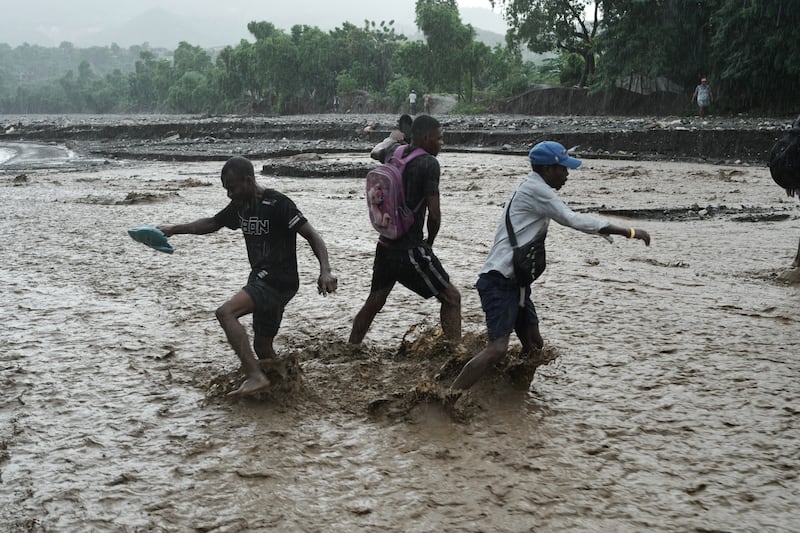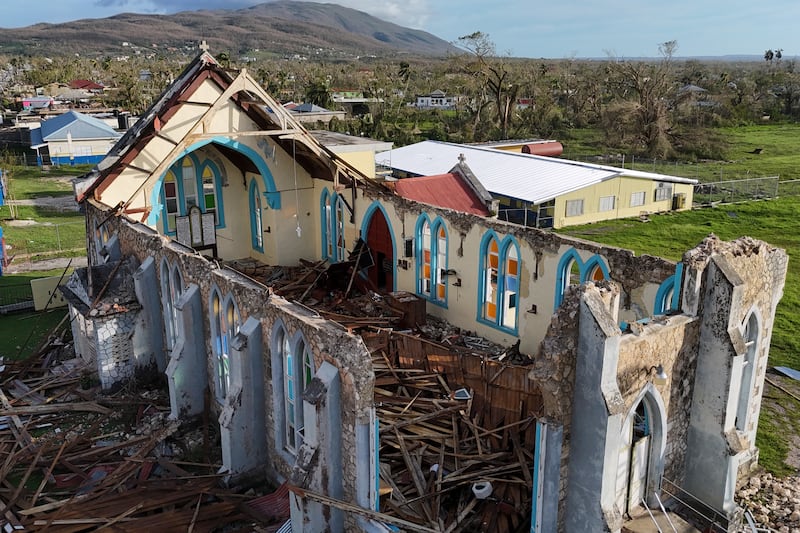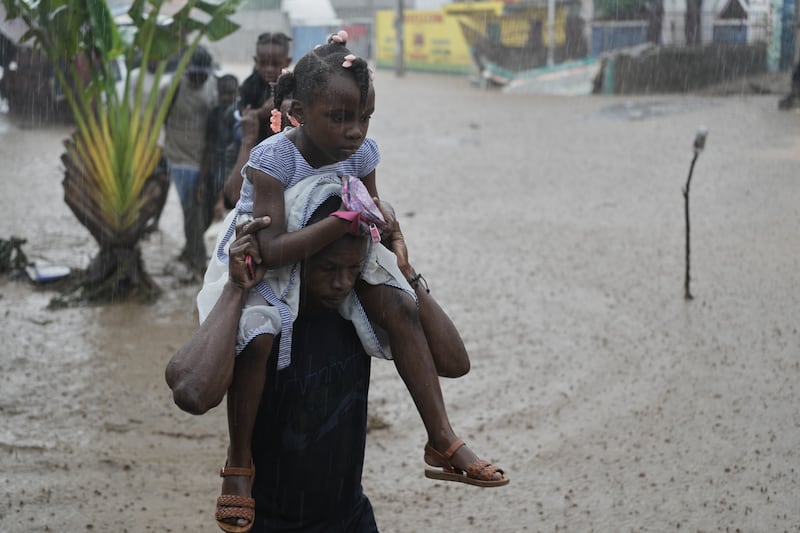- Thirty deaths from Hurricane Melissa have been confirmed, but numbers are expected to rise.
- Jamaica's infrastructure suffered severe damage and many areas are without power.
- Cuban officials report no fatalities, but there has been extensive damage.
Multiple Caribbean countries are reeling in the wake of Hurricane Melissa, which has been traveling through the region for the past few days, bringing torrential rains, devastating winds, landslides and flash floods.
The storm first made landfall in Jamaica on Tuesday as a catastrophic Category 5 hurricane and has now also passed through Cuba and the Bahamas. Other countries not in the direct path of the hurricane, like the Dominican Republic and Haiti, have also seen devastating impacts from the storm.
Hurricane Melissa was the strongest hurricane seen during this Atlantic hurricane season and one of the strongest Atlantic hurricanes ever recorded.
In the wake of the hurricane, rescue efforts are underway across the Caribbean as officials work to distribute aid to those impacted.
The storm is continuing to travel through the region as a Category 1 storm and will next pass near Bermuda.
What is the death toll from Hurricane Melissa?

So far, at least 30 deaths have been confirmed to have been caused by Hurricane Melissa, but a full death toll could take days or weeks to determine.
In Jamaica, four bodies were found in the aftermath in St. Elizabeth Parish, per CNN. Three people also died in the country during storm preparations. The government has yet to provide a death toll since the hurricane made landfall on the island on Tuesday.
On Thursday, Jamaica’s minister leading the emergency response, Desmond McKenzie, said he could not “give a proper update on the number of deaths so far” because police have not yet confirmed them all.
“But what I will say is there have been casualties and we do anticipate, based on our information, that there’ll be more,” he added, per The New York Times.
The highest death toll so far has been reported in Haiti. Even though the hurricane did not make direct landfall there, it caused significant damage and at least 23 deaths due to severe flooding and landslides. Twenty of these deaths, including 10 children, were caused by flooding in Petit-Goâve.
Jamaica is the hardest hit of the Caribbean nations

Jamaica took the hardest hit from Hurricane Melissa. The storm made landfall there on Tuesday, while it was at its strongest. When it hit the island nation, the storm was a Category 5 hurricane with estimated maximum sustained winds of 185 mph, per CNN.
As the storm pummeled the country, around 140,000 people were cut off, the government said.
The storm has left the island’s infrastructure “severely compromised,” McKenzie said.
Officials have faced challenges in performing damage assessments because some areas are in a total communication blackout.
According to BBC, Jamaica’s Transport Minister Daryl Vaz said at a Thursday news conference that the country’s eight major hospitals have power again, though much of the country is still in a blackout. The storm left 77% of the island without power.
The Norman Manley International Airport in Kingston is also operating once again after being closed for the storm. Jamaica’s government expects to receive several aid flights on Thursday.
Jamaica’s minister over infrastructure, Robert Morgan, shared at a news briefing that debris was blocking more than 130 roads across the country. The focus is on clearing roads that lead to critical institutions such as hospitals and airports.
Dana Morris Dixon, Jamaica’s information minister, said that West Jamaica had been devastated by the hurricane. She described some areas as being “flattened,” according to The New York Times.
“I think the entire Jamaica is really broken because of what has happened,” she added. “But we remain resilient.”
The Jamaican military is making its way by foot through blocked roads to reach Black River and other decimated communities in western Jamaica. Soldiers are also using a helicopter to respond to reports of any bodies found.
Jamaica’s government is working with the private sector to secure and distribute food and medication to areas most impacted by the storm, per The New York Times.
What the impacts of Hurricane Melissa look like in Cuba
No fatalities have been reported in Cuba after Hurricane Melissa made landfall there late Tuesday night into Wednesday morning. Over 735,000 people across eastern Cuba were evacuated ahead of the storm.
After riding out the storm, people are working to clear blocked roads and highways with heavy equipment and the help of the military. The military also rescued people trapped in isolated communities who were at risk from landslides, per CBS News.
Cuban officials have not provided an official estimate of damages across the country. Multiple affected provinces have reported losses of roofs, fiber-optic telecommunications cables, power lines, blocked roads, as well as losses of banana, cassava and coffee plantations. The affected provinces include Santiago, Granma, Holguín, Guantánamo and Las Tunas.
There are many communities in Cuba that have been left without electricity, internet and telephone service after the storm, per CBS News.
What we know about Hurricane Melissa’s impact in the Bahamas
After Hurricane Melissa passed over the central and southeastern islands of the Bahamas on Wednesday as a Category 1 storm, there have been no initial reports of deaths or injuries in the country, according to The New York Times.
Ahead of the storm, the government carried out evacuations to the capital, Nassau. But a westward shift in the hurricane’s path caused the central Bahamian islands, which weren’t evacuated, to bear the brunt of the storm.
The eye of the storm passed over the southern half of Long Island, hitting it with strong winds and leaving behind flooding in some places, per The New York Times.
How the U.S. is responding to the devastation in the Caribbean
After Hurricane Melissa hit Jamaica, President Donald Trump authorized immediate U.S. response to countries dealing with the devastating impacts of the storm. The Department of State has deployed a Disaster Assistance Response Team, including urban search-and-rescue teams, “to assess needs and provide search and recovery assistance,” according to a statement from the department.
The State Department is also working with United Nations agencies, NGOs and host governments to deliver food, medical supplies, water, hygiene kits, and search and rescue support to Jamaica.
On Thursday, U.S. Secretary of State Marco Rubio issued a statement, saying “the Trump administration stands with the brave Cuban people who continue to struggle to meet basic needs.”
As it has with other affected Caribbean countries, the State Department is issuing a declaration of humanitarian need for Cuba and has prepared to provide immediate humanitarian assistance directly and through local partners.
Rubio’s statement noted that U.S. law, which forbids nearly all commerce with the island, includes “exemptions and authorizations relating to private donations of food, medicine, and other humanitarian goods to Cuba, as well as disaster response.”
Cuba typically does not accept handouts from the U.S. government, but the country’s deputy minister of foreign affairs shared on social media that Cuba might be willing to receive U.S. government disaster assistance in the wake of the hurricane.
Jamaica is also receiving assistance from other countries. The premier of the Cayman Islands, André Ebanks, said his country had brought over essential supplies worth around $200,000, per The New York Times. His country has committed to sending a total of $1.2 million in resources and goods to Jamaica.
Jamaica’s government has launched a dedicated platform to mobilize support and coordinate relief and recovery efforts in times of crisis. Those looking to support people impacted by Hurricane Melissa in Jamaica should visit https://supportjamaica.gov.jm.
Where Hurricane Melissa is going next
After moving out of the southeastern Bahamas, Hurricane Melissa is back over open water for the first time since making landfall in Jamaica on Tuesday. Melissa could see some strengthening as it travels over water, but because it is moving into cooler waters, any strengthening will be moderate.
The storm is forecast to pass near Bermuda on Thursday or early Friday as a Category 2 or a strong Category 1 hurricane, per CBS News. A hurricane warning was in effect Thursday morning for Bermuda.
In preparation for the storm, authorities in Bermuda have closed the Causeway — a transport link connecting the country’s main island with St. David’s Island. Authorities will also be closing all schools and ferries out of an “abundance of caution,” per CNN.


